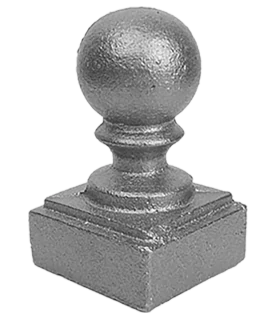sliding door bottom rollers
Understanding Sliding Door Bottom Rollers An Essential Component for Smooth Operation
Sliding doors are a popular choice for home and office spaces alike, due to their space-saving design and aesthetic appeal. Whether used as patio doors, closet doors, or room dividers, they offer convenience and functionality. However, the smooth operation of sliding doors heavily relies on the hidden mechanism of bottom rollers. In this article, we will explore the significance of sliding door bottom rollers, their types, installation, maintenance, and tips for troubleshooting common issues.
What are Sliding Door Bottom Rollers?
Bottom rollers are critical components installed at the base of sliding doors, enabling them to glide effortlessly along a track. These rollers come in various designs, but the primary function remains the same to support the door's weight and facilitate smooth movement. Typically made from durable materials such as plastic, nylon, or metal, bottom rollers need to withstand everyday wear and tear while maintaining optimal performance.
Types of Bottom Rollers
There are several types of bottom rollers commonly used in sliding doors
1. Single Wheel Rollers These consist of a single wheel designed to fit into a track. They are suitable for lighter doors and offer simple functionality.
2. Dual Wheel Rollers Featuring two wheels on each roller, these provide enhanced stability and support. They are often used for heavier sliding doors, ensuring smooth operation even under significant weight.
3. Adjustable Rollers These rollers can be adjusted to accommodate slight variations in height or track alignment, which is particularly useful for older doors or uneven flooring.
4. Sealed Rollers Built with an enclosed design, these rollers prevent dirt and debris from penetrating the mechanism, making them ideal for outdoor sliding doors where environmental factors may come into play.
Installation of Bottom Rollers
Installing bottom rollers on a sliding door is an achievable DIY project, but it requires precision and care. Here’s a basic guide
1. Remove the Door Start by lifting the sliding door off the track. You may need someone to assist you by lifting and guiding the door out of its position.
2. Check Existing Rollers Examine the old rollers for wear or damage. If they’re broken or too worn out, they should be replaced.
3. Install New Rollers Attach the new bottom rollers to the door frame according to the manufacturer’s instructions. Ensure they are aligned correctly to avoid misalignment once reinstalled.
sliding door bottom rollers

4. Rehang the Door Carefully lift the door and place it back onto the track. Adjust the height if necessary, ensuring that it glides smoothly.
5. Test the Operation Once the door is back in place, test the operation by sliding it back and forth. It should move easily without any obstructions or excessive friction.
Maintenance Tips
Proper maintenance prolongs the life of sliding door bottom rollers and ensures smooth operation. Here are some maintenance tips
- Regular Cleaning Keep the track free from dust, dirt, and debris that can hinder the rollers' movement. A vacuum cleaner or a damp cloth can be used to clean the track.
- Lubrication Occasionally, applying a silicone-based lubricant to the wheels can help reduce friction and enhance movement. Avoid using grease, as it can attract dirt.
- Inspect Periodically Regularly check for any signs of wear on both the rollers and track. Early detection of problems can prevent costly repairs down the road.
Troubleshooting Common Issues
If your sliding door isn't moving smoothly, there could be a few common issues associated with the bottom rollers
- Misalignment If the door appears crooked, the rollers may be misaligned. Adjust them accordingly to ensure proper alignment with the track.
- Worn Rollers Over time, rollers can wear down, leading to poor performance. If cleaning and lubrication don't improve functionality, consider replacing them.
- Obstruction Check for any obstructions along the track. Even small items can cause significant movement issues.
Conclusion
Sliding door bottom rollers play a crucial role in ensuring the seamless operation of your sliding doors. Understanding their types, proper installation, maintenance, and troubleshooting techniques will empower you to keep your doors functioning smoothly for years to come. Whether you’re a homeowner looking to enhance your living space or a professional in the building industry, having a solid grasp of this essential component is key to achieving the best performance from sliding doors.
-
Wrought Iron Components: Timeless Elegance and Structural StrengthNewsJul.28,2025
-
Window Hardware Essentials: Rollers, Handles, and Locking SolutionsNewsJul.28,2025
-
Small Agricultural Processing Machines: Corn Threshers, Cassava Chippers, Grain Peelers & Chaff CuttersNewsJul.28,2025
-
Sliding Rollers: Smooth, Silent, and Built to LastNewsJul.28,2025
-
Cast Iron Stoves: Timeless Heating with Modern EfficiencyNewsJul.28,2025
-
Cast Iron Pipe and Fitting: Durable, Fire-Resistant Solutions for Plumbing and DrainageNewsJul.28,2025
-
 Wrought Iron Components: Timeless Elegance and Structural StrengthJul-28-2025Wrought Iron Components: Timeless Elegance and Structural Strength
Wrought Iron Components: Timeless Elegance and Structural StrengthJul-28-2025Wrought Iron Components: Timeless Elegance and Structural Strength -
 Window Hardware Essentials: Rollers, Handles, and Locking SolutionsJul-28-2025Window Hardware Essentials: Rollers, Handles, and Locking Solutions
Window Hardware Essentials: Rollers, Handles, and Locking SolutionsJul-28-2025Window Hardware Essentials: Rollers, Handles, and Locking Solutions -
 Small Agricultural Processing Machines: Corn Threshers, Cassava Chippers, Grain Peelers & Chaff CuttersJul-28-2025Small Agricultural Processing Machines: Corn Threshers, Cassava Chippers, Grain Peelers & Chaff Cutters
Small Agricultural Processing Machines: Corn Threshers, Cassava Chippers, Grain Peelers & Chaff CuttersJul-28-2025Small Agricultural Processing Machines: Corn Threshers, Cassava Chippers, Grain Peelers & Chaff Cutters












